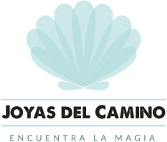CAMINO SCALLOP SHELLS
The shell, emblem of pilgrimage, “signum peregrinorum”, lucky logo from at least the twelfth century, had other pagan and Christian uses over the centuries until it developed enormously in the medieval period as a heraldic element, weapon of Santiago, its cathedral, its city, its pilgrims … They adopted the shell, who bore their name and who traveled their roads, covering scallops with the facades of their palaces, their coats of arms, the slabs of their tombs.
From ancient times the shells were invested with multiple meanings, assuming different pagan functions -symbol of love or talisman to protect from the evil eye, magic or diseases in general- or Christian, fundamentally baptismal or linked to funeral rites as a symbol of resurrection .
The first examples of the use of the shell in the world of pilgrimages date back to the beginning of the 12th century. Among the artistic representations, the critical literature has coincided in highlighting the relief of the western portal of Autun, in whose tympanum dedicated to the Final Judgment the shell appears on the springs of two pilgrims as a symbol of resurrection. By then, and coinciding with the Golden Age of the “major pilgrimages”, the role of the shell as a Jacobean emblem had been consolidated.

The shell Pecten maximus as a souvenir or signum peregrinorum, sold by the merchants in the shops of Compostela and sewn by the pilgrims in their clothes and hats, was one of the best-known medieval European symbols, probably invented or, at least, promoted during the bishop of the wise Diego Gelmírez.
In the mid-twelfth century, the Calixtino Codex refers to the “scallop” shell three times, giving it two different meanings. On the one hand Calixtino still remembers the pagan and ancient uses of the shell, attributing in miracle 12 of the second book or Liber miracolorum, the healing of the crusader through its contact, as if it were an amulet capable of curing or preventing diseases.
The other two references of the Codex refer to the function of the scallop as a Jacobean emblem, in the famous sermon Veneranda dies and in book V, known as the pilgrim’s guide, which includes the important shell trade that already existed in the city. This commercial activity would have used, at first, real molluscs collected on the beaches of the nearby Atlantic coast, while over time the establishments would sell mainly reproductions in metal and jet, which occupied an important part of the huge market of pious objects. in the Compostela of the twelfth century.
Why was the shell chosen? An object that could be collected free of charge and in large quantities on the nearby coast of the Land of Santiago, an emblematic, natural and organic object as the only emblem then known: the palm that the pilgrims and crusaders brought upon their return from Jerusalem.


